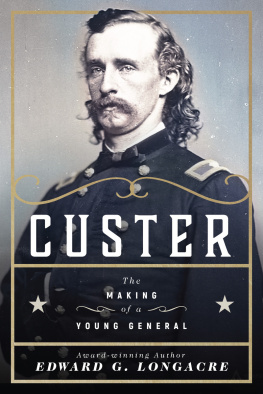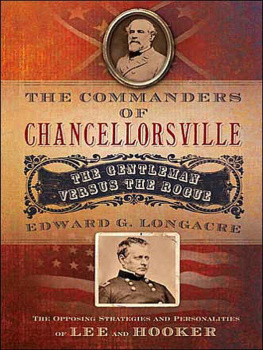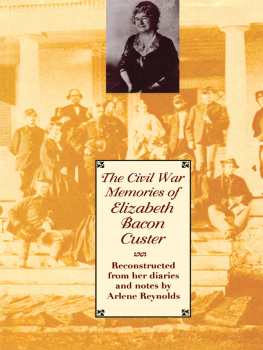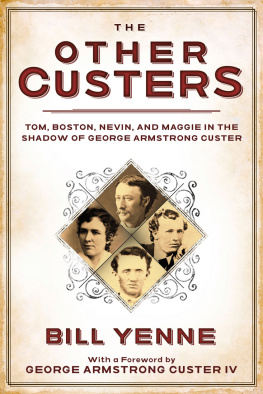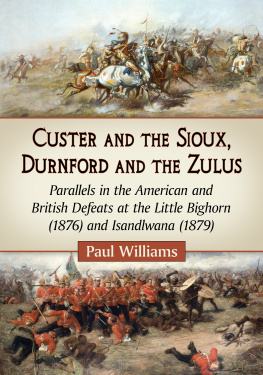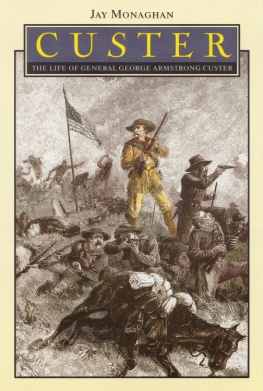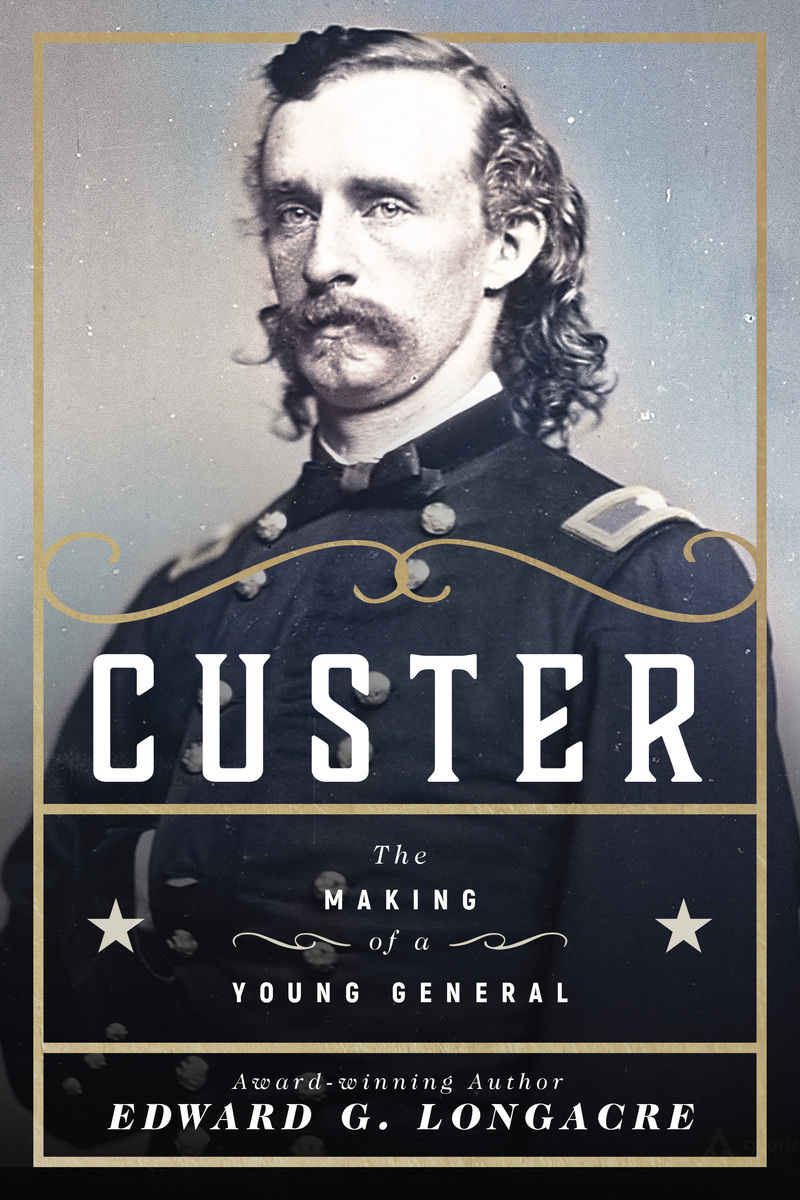


Copyright 2018 by Edward G. Longacre
All rights reserved. No part of this book may be reproduced in any manner without the express written consent of the publisher, except in the case of brief excerpts in critical reviews or articles. All inquiries should be addressed to Skyhorse Publishing, 307 West 36th Street, 11th Floor, New York, NY 10018.
Skyhorse Publishing books may be purchased in bulk at special discounts for sales promotion, corporate gifts, fund-raising, or educational purposes. Special editions can also be created to specifications. For details, contact the Special Sales Department, Skyhorse Publishing, 307 West 36th Street, 11th Floor, New York, NY 10018 or .
Skyhorse and Skyhorse Publishing are registered trademarks of Skyhorse Publishing, Inc., a Delaware corporation.
Visit our website at www.skyhorsepublishing.com.
10 9 8 7 6 5 4 3 2 1
Library of Congress Cataloging-in-Publication Data is available on file.
Cover design by Rain Saukas
Cover photo credit: National Archives
Print ISBN: 978-1-5107-3319-0
Ebook ISBN: 978-1-5107-3320-6
Printed in the United States of America.
for
David and Heidi
Andy and Pam
Contents
Introduction
Military historians find it curioussome find it disconcertingthat the general public assumes that George Armstrong Custers sole claim to a place in the national memory is the untimely fate that befell him and 262 officers and men of the 7th United States Cavalry plus scouts and civilians in southeastern Montana Territory on a June day in 1876. Many students of history, even those who consider themselves well-acquainted with the salient events of Americas past, fail to realize that Custers celebrity predated by more than a dozen years his encounter with the Lakota Sioux and Cheyenne at the Little Bighorn. In fact, the nationwide attention Custer garnered while defending the Union dwarfed the notoriety that followed him on the post-Civil War frontier. From mid-1863 until the spring of 1865 Custer was known in all sections of the war-torn nation as the quintessential boy generalat twenty-three, the youngest officer in the volunteer army with a star on his shoulders. His exploits on campaign and in battle received major attention in newspapers throughout the North while his portrait regularly graced the pages of the nations most widely read publications.
Although Custers fame may have antedated his exploits as an Indian fighter, published works that concentrate on his Civil War service are few, and even fewer capture the essence of his rise to renown. Almost all Custer biographies cover the entire range of his military career and devote a disparate amount of attention to his campaigns against Native Americans. Devoid of the glory and the quasi-chivalric character of his battles against the forces of the Confederacy, Custers campaigns in the West generated controversy, criticism, and, in the minds of millions of Americans then and since, infamy.
Twenty years ago I made a limited effort to characterize the Civil War Custer in a book about the Michigan Cavalry Brigade of the Army of the Potomac, the command he led to fame in Pennsylvania, Maryland, and Virginia from 1863 to 1865. The present study, which focuses on Custer himself, covers the years leading up to his attainment of star rank as well as his first three months in command, during which he developed the tactics and style of leadership that would propel him through the rest of the war. That epoch saw a young general rise on the strength of his merits and potential to attain the success that escaped many another leader who enjoyed advantages of maturity and field experience denied to him. A projected second volume will cover the remainder of Custers Civil War service and his controversial stint in Texas during the early months of Reconstruction.
The current book has two principal goals. It attempts to identify and correct the myths, misconceptions, and misinterpretations that have distorted readers impressions of the soldier and the man. The scrutiny of dubious historical analysis extends beyond Custers field operations to include his youth and upbringing, his professional education, his service as a staff officer to a host of powerful superiors, and his courtship of Elizabeth Clift Bacon of Monroe, Michigan. The work also seeks to add depth to the Custer narrative by providing a substantial amount of detail on aspects of his life and career that have received relatively brief attention from historians, biographers, and the compilers of the Official Records of the Union and Confederate Armies . For this reason I quote at greater length than any other chronicler Custers wartime letters to family and friends, in order to relate his prewar and wartime service as much as possible through his own eyes and in his own words. In almost every instance his writings are rendered verbatim except for the inclusion of essential punctuation, thus correcting a stylistic lapse that Custer never managed to overcome.
Acknowledgments
When I began researching this study in the fall of 2015 the first librarian or archivist to provided assistance was Charmaine Wawrzyniec, curator of the Custer collection at the Ellis Library and Reference Center in Monroe, Michigan. Over the intervening months Charmaine furnished me with Custer documents including battle and campaign reports, some hitherto unknown, and she graciously answered a myriad of questions about Custers life on and off the battlefield. Through her I reestablished contact with a longtime Custer collector, researcher, and historian, the Reverend Vincent A. Heier of Robertsville, Missouri, who generously took time from his duties as a reserve priest of the Diocese of Saint Louis to provide books, articles, and various other sources pertinent to my research. These included typed transcriptions and summaries of dozens of letters written by Custer, members of his family, and numerous other relatives, friends, and army comrades.
Others who provided material assistance include Susan Lintelmann of the United States Military Academy Library, from whom I obtained copies of Custer correspondence from West Points vast collection of Civil War manuscripts. Her colleague Susan Mauldin-Ware of the U.S.M.A. Archives provided access to Custers notoriously lengthy cadet disciplinary log. At the Little Bighorn Battlefield National Monument in Montana I was aided by Cindy Hogan, who at my behest diligently searched the vast collection of documents in the Elizabeth Bacon Custer Collection. Caitlyn Riehle and Nicholas Speth of the Monroe County Historical Museum and Archives obtained for me copies of letters in the George Armstrong Custer and Lawrence A. Frost collections. At the U.S. Army Heritage and Education Center, Carlisle Barracks, Pennsylvania, Rich Baker and Marlea Leljedal made available copies of letters and diaries by members of Custers Wolverine Brigade. In Cadiz, Ohio, I obtained information and photographs pertaining to the Custer family with the help of Dr. Scott Pendleton, president of the Harrison County Historical Society, and Susan Adams, president of the Harrison County Genealogical Society. Sandra Trenholm of New Yorks Gilder Lehrman Institute of American History provided background on dispatches carried by Custer during the Antietam Campaign. Brian Moose of the L. Tom Perry Special Collections at Brigham Young University, Provo, Utah, helped me obtain copies of Custers prewar correspondence with his friend John Chamberlain.
Next page
